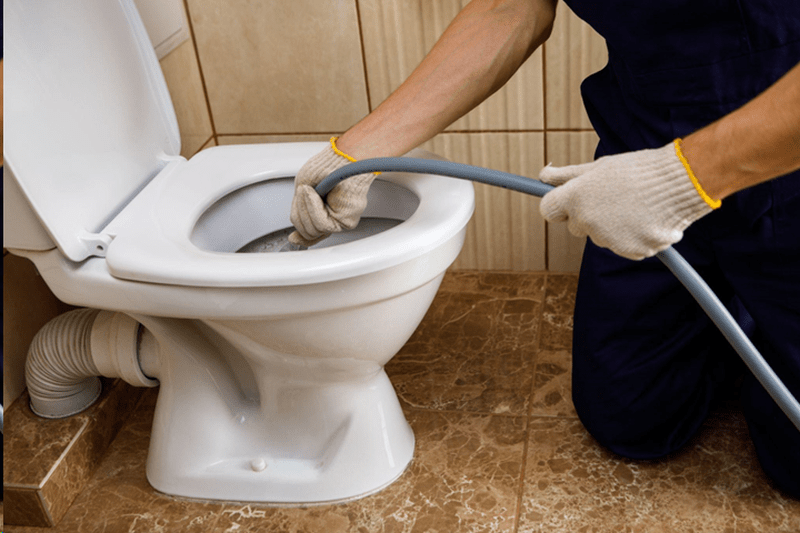Mastering Toilet Repair: Solutions for Common Issues
Toilet troubles are a common household nuisance, but many can be resolved with some know-how and elbow grease. Understanding the basics of toilet repair can save homeowners time and money and help them deal with the inconvenience of a malfunctioning bathroom. This article explores solutions for some of the most common toilet issues, empowering you with the knowledge to tackle problems head-on.
Understanding Your Toilet’s Mechanics
Before diving into repairs, it’s essential to understand the basic components of your toilet. The toilet consists of two main parts: the tank and the bowl. The tank houses the flushing mechanism, which includes the fill valve (responsible for refilling the tank after a flush), the flush valve (allows water to move from the tank to the bowl during a flush), and the flapper (seals the flush valve opening to keep water in the tank until the next flush).
Common Toilet Issues and Their Solutions
1. Constant Running Water
A toilet that won’t stop running is annoying and wasteful and can significantly increase your water bill. The usual suspects are a faulty flapper, an improperly adjusted float, or a fill valve issue.
Solution: Check the flapper for wear or warping and replace it if necessary. Adjust the float to ensure the water stops filling at the correct level. If the issue persists, inspect the fill valve and consider replacing it.
2. Weak or Partial Flush
A weak flush often indicates a clog in the jet holes around the rim of the toilet bowl or an issue with the tank’s water level.
Solution: Use a small mirror to inspect and a wire to clear out any clogged jet holes. Adjust the tank’s water level by tweaking the float mechanism to allow more water per flush.
3. Toilet Won’t Flush at All
If pressing the handle doesn’t initiate a flush, the chain connecting the handle to the flapper or the handle mechanism might be broken or disconnected.
Solution: Reconnect or replace the chain if it’s broken. If the handle is loose or ineffective, it may be necessary to tighten it or replace the entire flush handle assembly.
4. Water on the Floor Around the Toilet
Water on the floor indicates a leak, which could be caused by a faulty wax seal under the toilet’s base, loose tank bolts, or a crack in the tank or bowl.
Solution: Tighten the tank bolts if they’re loose. If the leak is from the base, you may need to replace the wax ring. Replacing the affected part is the only solution for cracks in the tank or bowl.
5. Slow Filling Tank
A slow filling tank is often a sign of a clogged fill valve or a problem with the water supply line.
Solution: Check the water supply valve to ensure it’s fully open. Clean the fill valve by shutting off the water supply, removing the valve cap, and clearing any debris. Replace the fill valve if cleaning doesn’t solve the issue.
Tools You’ll Need for Toilet Repair
Having the right tools can make toilet repairs much easier. Essential tools include:
- Adjustable wrench
- Plunger
- Toilet auger
- Screwdriver
- Replacement parts (flapper, fill valve, flush valve, wax ring, etc.)
Preventative Maintenance Tips
Preventive maintenance can help avoid many common toilet issues:
- Regular Cleaning: Regular cleaning prevents the buildup of minerals and debris that can affect your toilet’s functionality.
- Inspect Components Regularly: Periodically check the flapper, fill valve, and other internal components for wear and tear.
- Avoid Introducing Chemical Toilet Cleaners in the Tank: These can damage your toilet’s components and have been known to clog the bowl jets as well. Chemicals that hang in the bowl are okay to use.
- Be Mindful of What You Flush: Avoid flushing anything other than toilet paper and human waste to prevent clogs.
When to Call a Professional
While many toilet repairs are within the reach of a DIY enthusiast, some situations call for professional intervention. If you encounter complex issues, such as deep clogs that resist auguring, leaks you can’t source, or problems with the plumbing line itself, it’s wise to call in a plumber. Additionally, if you’re not comfortable performing a repair or if your attempts haven’t resolved the issue, a plumbing professional can help ensure the problem is fixed correctly and efficiently.
Conclusion
Mastering the basics of toilet repair can make you more self-reliant and help keep your bathroom in good working order. By understanding common issues and their solutions, you can quickly address problems and prevent further damage. Remember, preventive maintenance is key to avoiding many common toilet issues. However, don’t hesitate to call in a professional when the situation is beyond your skill set. With the right approach, you can ensure that your toilet remains a reliable and efficient fixture in your home.
Article Submitted By Community Writer

